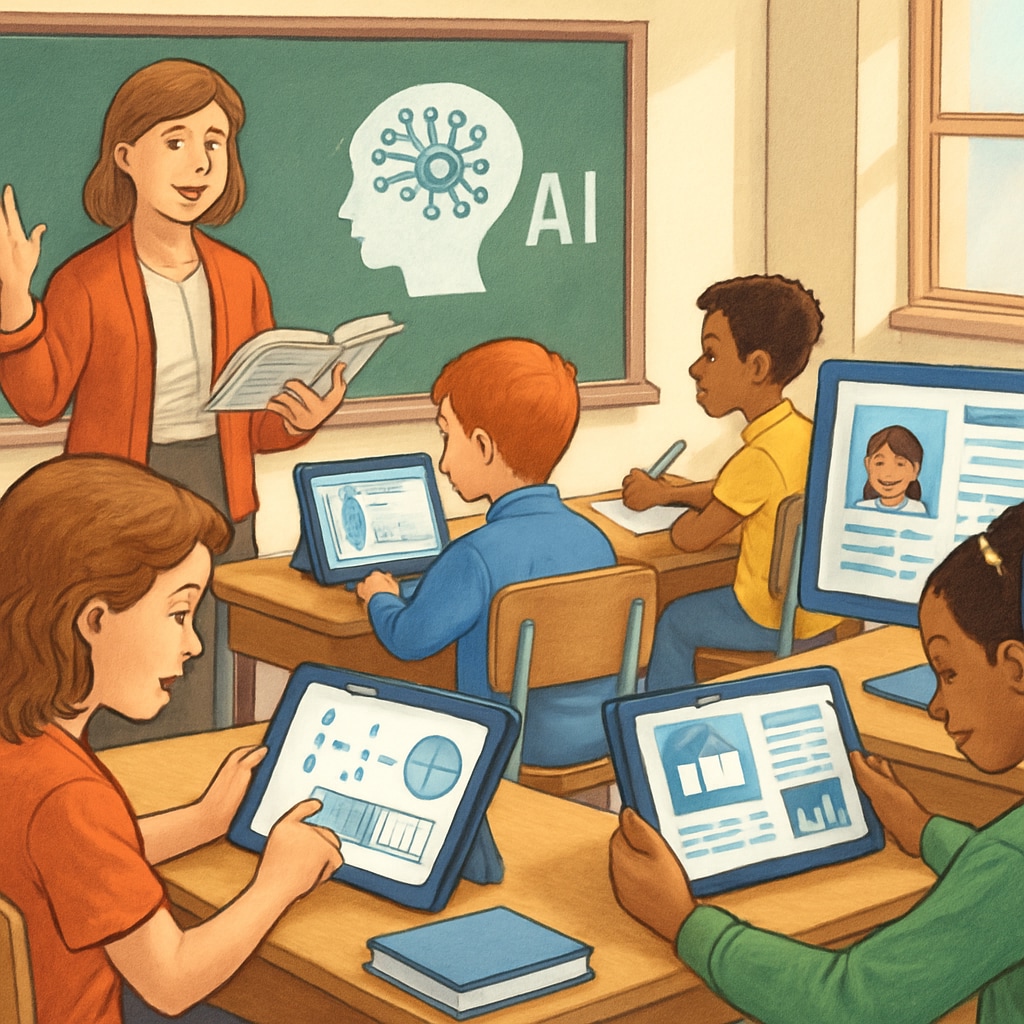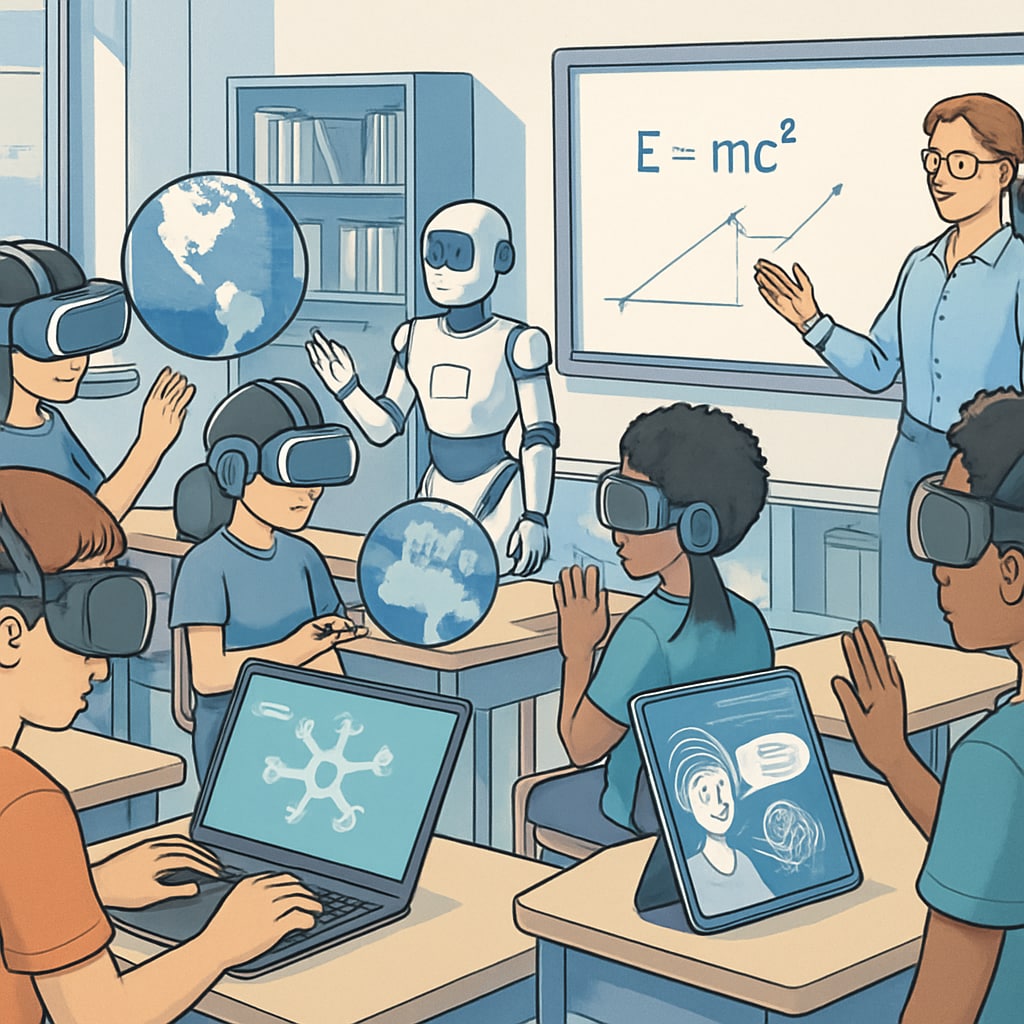Artificial intelligence (AI) is revolutionizing various sectors, and its impact on the education industry is undeniable. The integration of AI in education is driving significant transformations, heralding a future where personalized learning, automated administration, and innovative teaching methods redefine traditional classrooms. This article explores the current applications of AI in K12 education, the prevailing trends, and a visionary outlook for 2030, highlighting how this transformative technology is shaping the future of learning.
Current Applications of AI in K12 Education
AI has already begun to reshape the K12 education landscape in meaningful ways. From enhancing personalized learning experiences to automating administrative tasks, its applications are diverse and impactful. For instance, AI-powered platforms like adaptive learning systems customize educational content based on a student’s pace, strengths, and weaknesses. Such systems ensure that no student is left behind while simultaneously challenging advanced learners to excel further.
In addition, AI tools streamline administrative tasks, allowing teachers to focus on instruction rather than paperwork. For example, grading systems that employ machine learning can assess written assignments, saving time while maintaining objectivity. AI chatbots are also being used to provide instant responses to students’ queries, fostering engagement and reducing the workload of educators.

Key Trends in AI-Driven Education
The adoption of AI in education is not merely a fleeting trend; it represents a fundamental shift. Here are some key trends shaping the AI-driven education landscape:
- Personalized Learning: AI enables tailored learning experiences, ensuring that each student receives instruction suited to their unique needs.
- Data-Driven Insights: AI systems collect and analyze vast amounts of data to identify patterns, predict student outcomes, and inform teaching strategies.
- Immersive Learning Environments: AI-powered virtual and augmented reality tools create engaging, interactive learning experiences that simulate real-world scenarios.
- Equitable Access: AI-driven platforms can bridge the gap for students in underserved regions, providing access to quality education resources globally.
These trends are paving the way for a future where education is more inclusive, engaging, and effective.
A Vision for AI and Education in 2030
Looking ahead to 2030, the integration of AI in education is poised to deepen, resulting in transformative changes. By 2030, classrooms will likely be equipped with intelligent assistants capable of real-time analysis of student progress. These systems will not only provide immediate feedback but also predict learning challenges before they arise, enabling proactive solutions.
Moreover, AI will facilitate lifelong learning by offering personalized learning pathways that evolve with the learner’s career and interests. Digital tutors will become more sophisticated, capable of teaching complex concepts and fostering critical thinking skills. Additionally, AI will play a crucial role in addressing global education disparities, providing scalable solutions to bring quality education to remote or underprivileged areas.

However, the widespread adoption of AI in education will not be without challenges. Ethical considerations, data privacy, and the need for teacher training on AI technologies will remain critical areas to address. Policymakers, educators, and technologists must collaborate to ensure that AI’s benefits are equitably distributed while mitigating potential risks.
In conclusion, the journey toward AI-driven education is just beginning. As we move toward 2030, artificial intelligence holds immense potential to reshape K12 education, creating a future where every student has the opportunity to thrive. By embracing this technology responsibly, we can unlock new possibilities for teaching, learning, and innovation.
Readability guidance: Short paragraphs and lists have been used to summarize key points. The content maintains a balance between technical depth and accessibility, with regular transitions for smooth reading.


